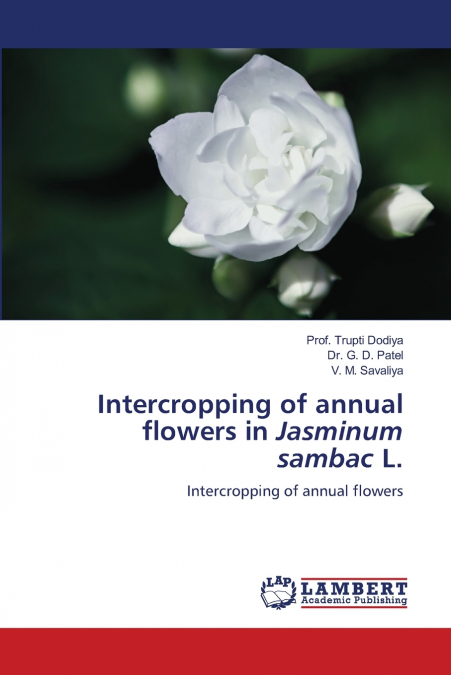
Dr. G. D. Patel / Prof. Trupti Dodiya / V. M. Savaliya
 Donde los libros
Donde los libros
 Librería 7artes
Librería 7artes
 Librería Elías (Asturias)
Librería Elías (Asturias)
 Librería Kolima (Madrid)
Librería Kolima (Madrid)
 Librería Proteo (Málaga)
Librería Proteo (Málaga)
Jasmine is one of the oldest and most important ornamental flowering plant widely grown for its fragrant flowers. It belongs to family Oleaceae. In India, commercial scale cultivation of the jasmine is taken up in the states of Tamil Nadu, Karnataka, Kerala, Gujarat, Andhra Pradesh and Maharashtra. Intercropping is the cultivation of two or more crops at the same time in the same field. When two or more crops with different rooting systems, a different pattern of water and nutrient demands and a different above ground habits are planted together, water, nutrients and sunlight are used more efficiently. Therefore, the combined yields of crops grown as intercrops can be higher than the yield of the same crop grown as pure stand (sole). These advantages may be especially important because they are not achieved by means of costly inputs, but by the simple expedient of growing crop together. It provides insurance against total crop failure.